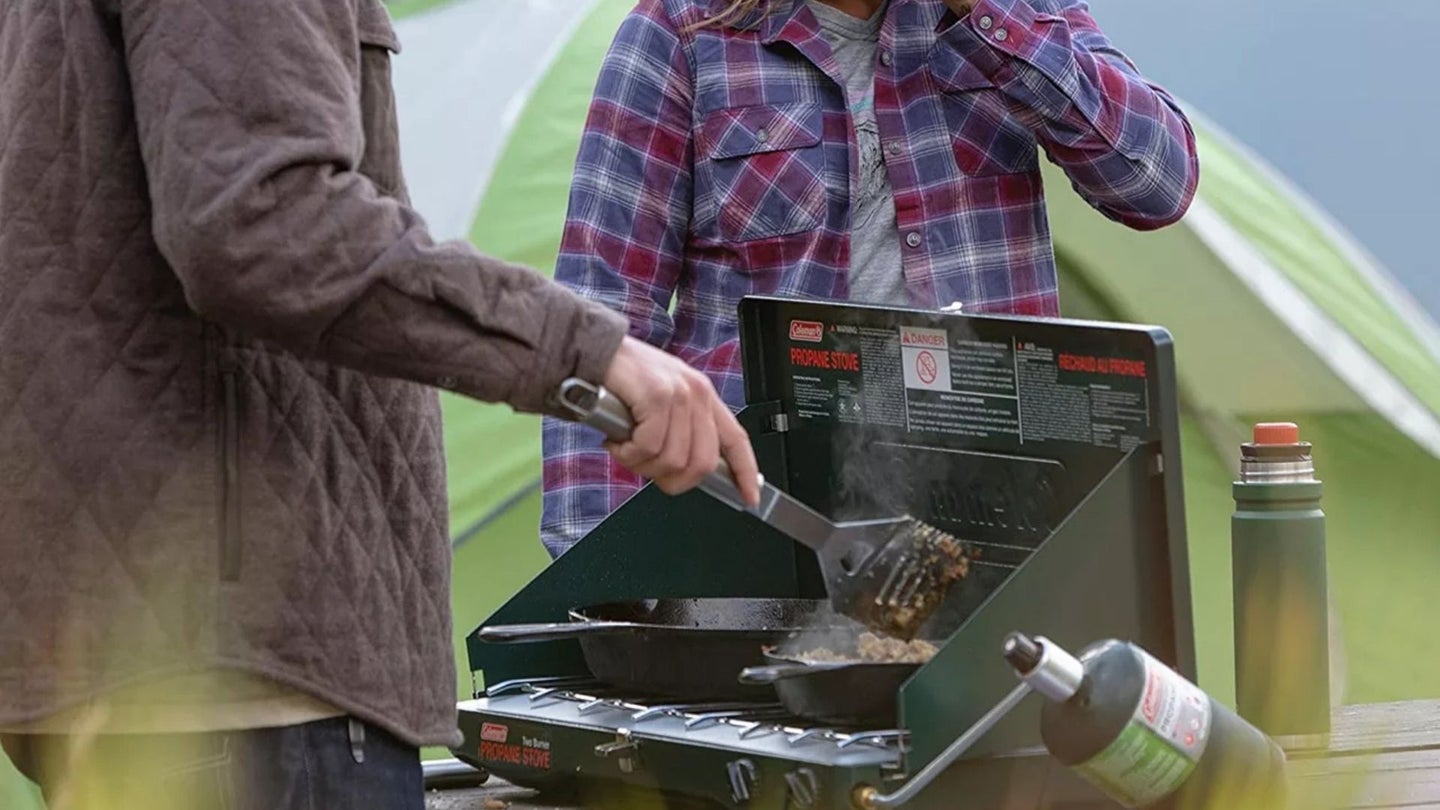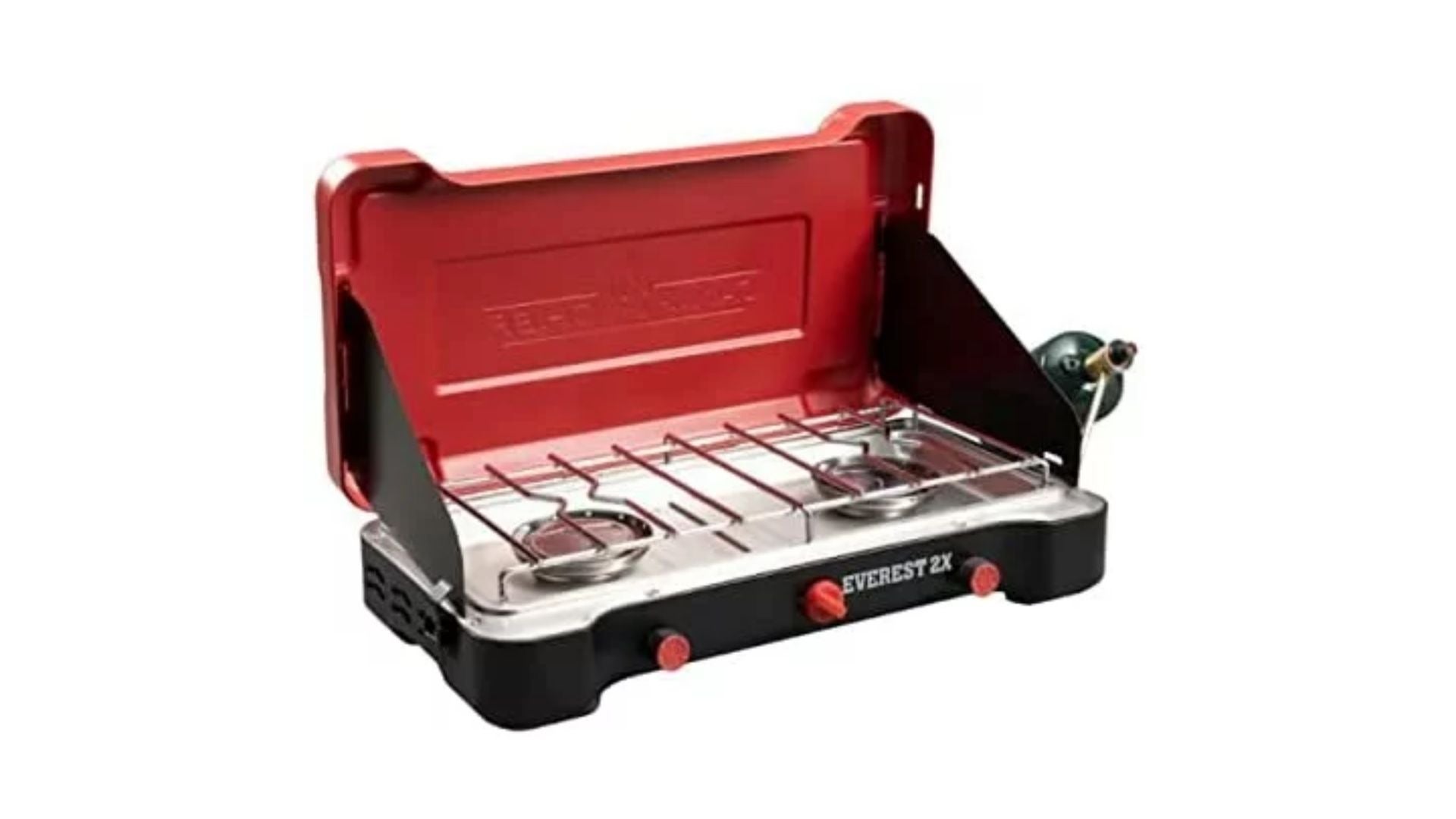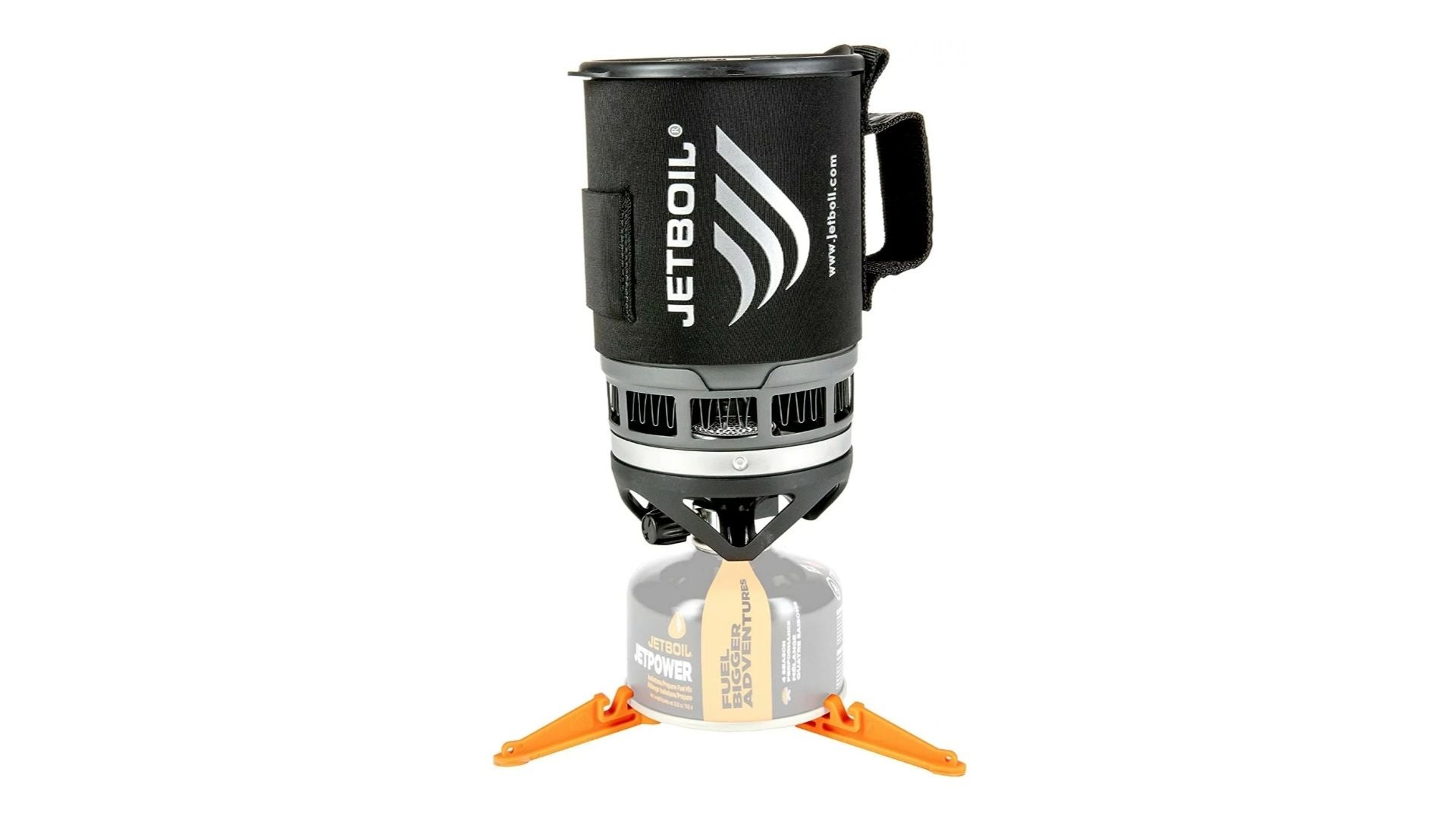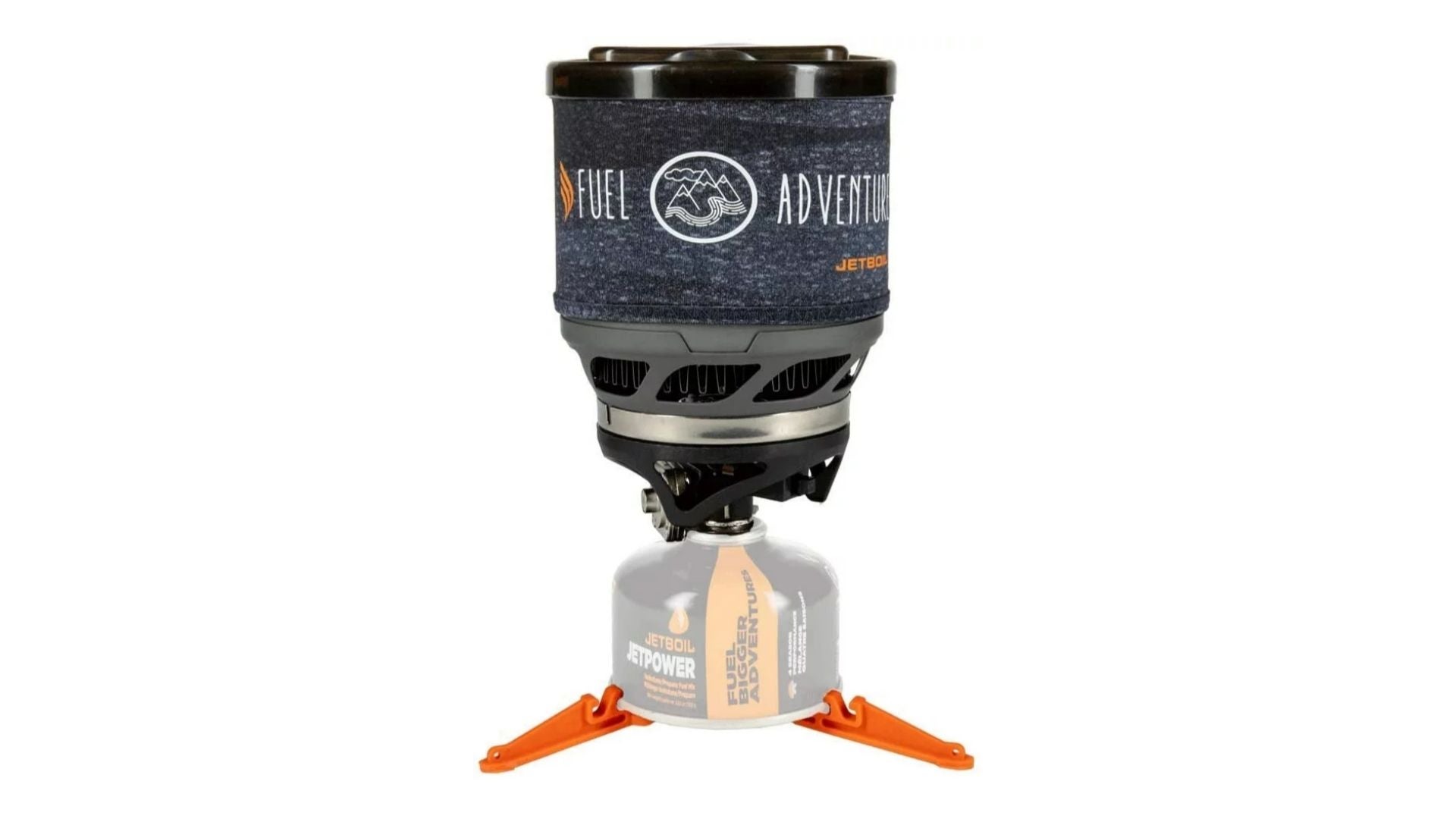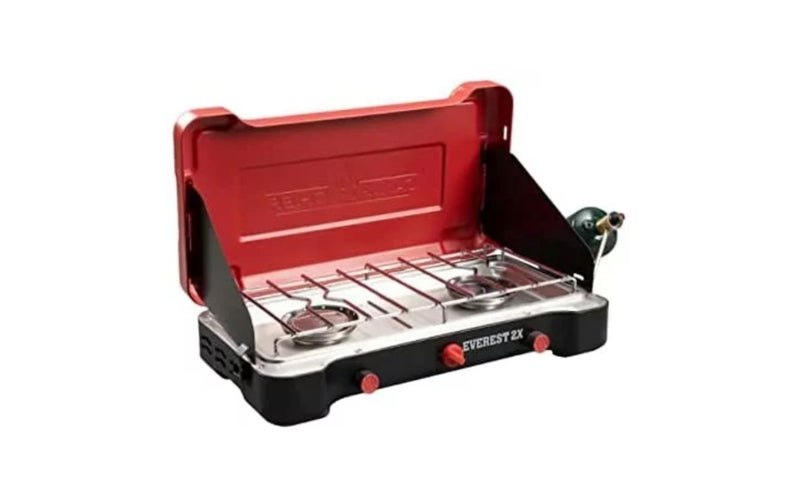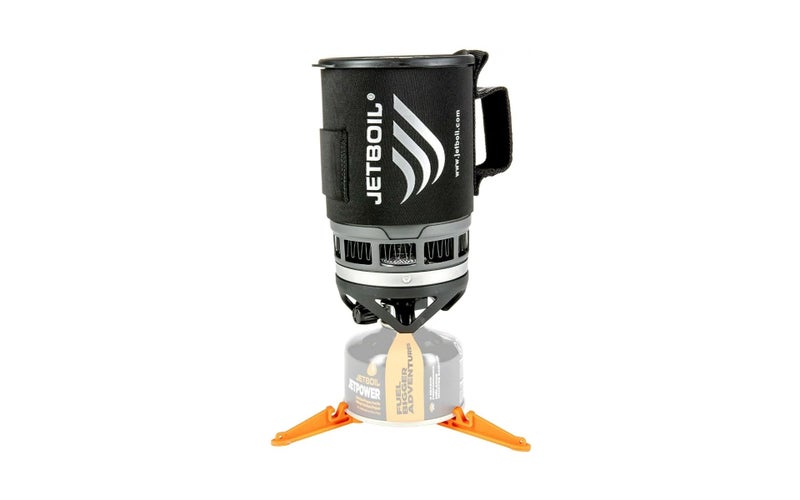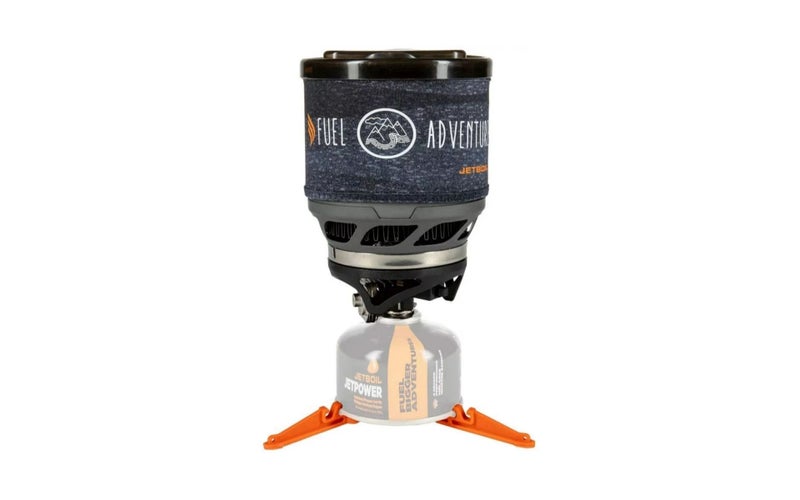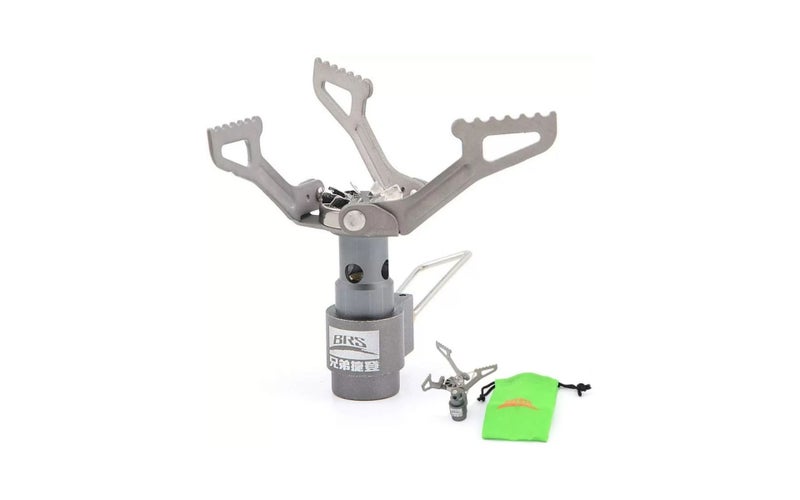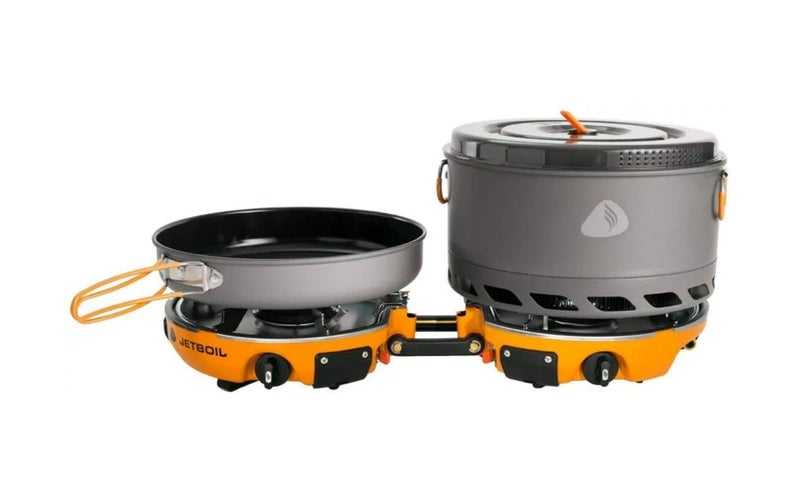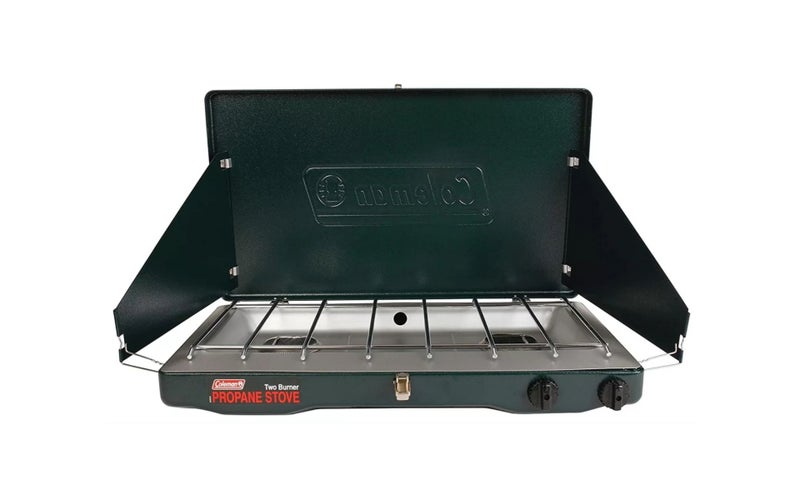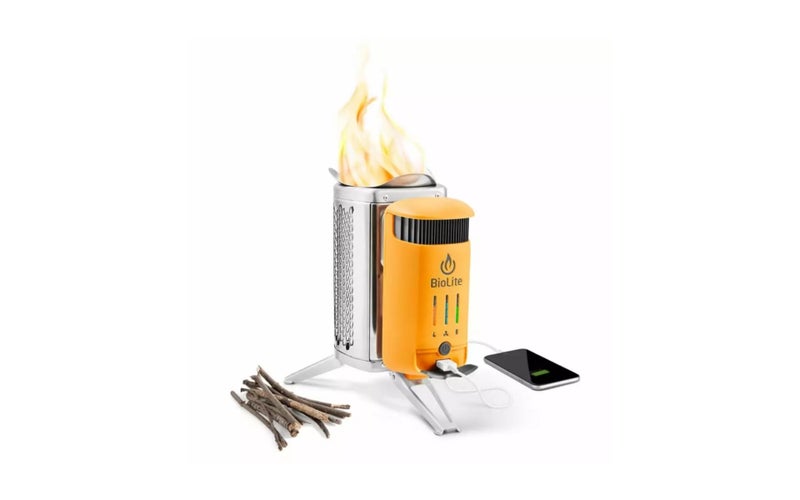We may earn revenue from the products available on this page and participate in affiliate programs.
Camping stoves are an important part of any trip into the wilderness. Sure, you might be aware of uber-gram-conscious ultra lightweight hikers who advocate cold-soaking your food and lightening your pack by leaving your stove at home. Don’t listen to them. You’ll just end up at camp at the end of a long, tiring day and be faced with the chore of gagging down cold, soggy, unappetizing food. I tried it. It sucks.
A good camping stove is more than just a creature comfort or morale booster. In cold weather, it can save lives by generating warm fluids to give to hypothermia victims, and I’ve used mine over the years in this capacity more than once. There’s a wide array of stoves out there for everything from car camping to ultralight backpacking, so we did our homework to help you select the best camping stove.
When you’re looking to put your inner Gordon Ramsey up against a Kodiak grizzly bear, there’s no better platform than a Camp Chef Everest 2X. This stove is a top-of-the-line two-burner that’s lightweight, efficient, and powerful — sporting two 20,000 BTU cast-aluminum burners on 215 square inches of cook space. This low-profile stove performs very well in the wind and boils water fast. It also has a precision regulator to allow for low heat simmering so you won’t scorch the shit out of your wild mushroom risotto. It’s too large and heavy to backpack but is awesome for car camping, using at expedition basecamps, and augmenting your grill for backyard barbecues.
- Weight: 12 pounds
- Power: 40,000 BTU (20,000 per burner)
- Volume: 215 square inches cooking area
- Speed to boil: 1 liter in 3 minutes 35 seconds
- Efficiency: 12 liters of water per 100g fuel can
- Precision cook: Yes
- User capacity: 4+
- Integrated igniter: Yes
- Dimensions packed: 25.2 inches x 12.7 inches x 5.6 inches
- Fuel type: Propane
40,000 BTU power
215 square inches cook area
Solid windscreen
Durable construction
Packable and portable
Simmers well
Expensive
Harder to clean than others
This all-in-one backpacking canister stove is ideal for solo users looking for a simple, reliable, and affordable stove to use in the wilderness. The Zip is the little brother of the JetBoil MiniMo at half the cost. It features a 0.8 liters insulated FluxRing pot with a fabric loop handle, an insulating drink-through strainer lid, and a bottom cover that doubles as a measuring cup and bowl.
The unit is well-made and the burner threads easily onto fuel canisters and connects snugly with the pot. The regulator knob is a bit recessed for our preferences (we like the wired MiniMo design much better) and a bit awkward to get to. It does not have an integrated igniter, so bring along some matches or a lighter. The Zip is compatible with JetBoil’s coffee press, hanging kit, pot support, and skillet accessories.
- Weight: 12 ounces
- Power: 4,500 BTU
- Volume: 0.8 liters
- Speed to boil: 0.5 liters in 2 minutes 30 seconds
- Efficiency: 12 liters of water per 100 gram fuel can
- Precision cook: No
- User capacity: One
- Integrated igniter: No
- Dimensions packed: 4.1 inches x 6.5 inches
- Fuel type: Isobutane/propane mix
Lightweight
Packable
Quick to boil
Efficient
Fiddly, small control knob
No integrated igniter
Poor simmer ability
The stove I currently use in the backcountry is the JetBoil MiniMo, and it has served me reliably since 2016. The beauty of the MiniMo is that it provides a large amount of boiling hot water in seconds and is pretty efficient with fuel — you’ll get a lot of burns out of a standard fuel tank.
The MiniMo is a canister stove, meaning that the burner unit screws into and sits atop a metal isobutane fuel canister. It’s simple in design consisting of six components: a 1.0 liter Neoprene-wrapped FluxRing metal collapsible-handled cooking cup with integrated windscreen, an adjustable flame burner unit with integrated Piezo igniter, a plastic insulating drink-through lid, a plastic bottom cover that serves as a measuring cup, a storage bag for the burner unit, and an attachable plastic base to add stability on uneven ground and prevent you from dumping your food on the ground and cursing like a sailor. You’ll need to buy the fuel canisters separately (available in 100 or 230ggrams).
It’s fast to set up. My quickest is 12 seconds, and it will boil a liter of water in a little over four minutes. Unlike many backcountry stoves, the burner has a thermal regulator that also allows you to simmer, which is pretty handy. The system is super packable; the base folds and snaps into the lid, and the burner and small (100g) fuel canister can be placed inside the cup.
- Weight: 14.6 ounces (415g)
- Power: 6000 BTU
- Volume: 1.0 liter
- Speed to boil: 0.5 liters in 2 minutes 15 seconds
- Efficiency: 12 liters of water per 100 gram fuel can
- Precision cook: Yes
- User capacity: 1 to 2 people
- Integrated igniter: Push-button
- Dimensions packed: 5 inches x 5 inches x 5.5 inches
- Fuel type: Isobutane/propane canister
Speed (boils water quickly)
Efficient (boils 12 liters of water per 100 gram tank)
Great capacity (1 liter) to weight (14.6 ounces) ratio
Very packable
Expensive
Plastic measuring cup broke within a year, didn’t miss it
If you want the lightest and cheapest canister stove we could find, the BRS 3000T is the stove for you. Exceptionally small and light, this titanium burner is ideal for the gram-conscious long-distance backpacker who only wants to boil water fast. Lacking a windscreen, it’s not the most fuel-efficient unit and will struggle to boil in breezy conditions, so you’ll need to create one or use it in the vestibule of your tent.
The BRS 3000T has a great regulator for stoves of this type and can control output sufficiently at the low-end to simmer. The unit doesn’t come with a fuel canister or integrated pot, so you’ll have to buy those separately, but you’ll likely be able to fit both the burner and fuel inside the pot for great packability. It has a tiny burner head so watch out for scorching — keep stirring! It’s made well, but you’ll have to pay close attention to ensuring your pot doesn’t fall off the small tri-pronged cook surface. This is a superb value purchase.
- Weight: 0.9 ounces (24 g)
- Power: 6000 BTU
- Volume: 1 liter
- Speed to boil: 1 liter in 4 minutes 55 seconds
- Precision cook: Yes
- User capacity: One
- Integrated igniter: No
- Dimensions packed: 1.5 inches x 1.5 inches x 2 inches
- Fuel type: Isobutane/propane canister
Super light
Very small, packable
Adjustable flame
Ridiculously affordable
No integrated igniter
Struggles in the wind
If you’re looking for an all-in-one innovative two-burner camping stove that looks like a flying saucer and money is no object, look no further than the JetBoil Genesis. We love the portability and packability of this unit.
The pan, pot, lid, and two-burner cooking unit nest together in a carry bag the size of a soccer ball. A high-quality brass fitting connects the stove to a standard 16.4-ounce propane cylinder and the unit accepts a clear plastic windscreen. The Genesis also has a fuel line port that will connect to their Luna stand-alone burner or other Jetlink systems. It features a generous 5L FluxPot and 10-inch ceramic-coated nonstick fry pan and lid. Each burner delivers a capable 10,000 BTUs and delivers consistent performance to 20F.
- Weight: 9.1 pounds
- Power: 20,000 BTU (10,000 per burner)
- Volume: fits 5 liter pot and 10-inch pans simultaneously
- Speed to boil: 1 liter in 3 minutes 15 seconds
- Efficiency: 48 liters of water boiled per 1 pound propane bottle
- Precision cook: Yes
- User capacity: 4+
- Integrated igniter: Yes
- Dimensions packed: 10.3 inches x 7.2 inches
- Fuel type: Propane
Packable and portable
Powerful burners
Comes with pot and pan
Easy to use and clean
Versatile
Adaptable
Very expensive
Flimsy windscreen
C’mon. When it comes to car camping, there’s only one real choice for the best stove: the Coleman Classic. Coleman has been making affordable, iconic camping stoves since at least the 1970s. One of my earliest and favorite childhood memories is smashing my Uncle Jim’s face through the tent fabric with a big, red 6V flashlight after he tried to scare the shit out of us. Too scared to sleep, my dad fired up some hot cocoa on, yep, you guessed it, a Coleman two-burner.
Simple and affordable, this stove and a picnic table or truck tailgate will meet all your camping needs from scrambled eggs and bacon breakfasts to burgers and hot dogs for dinner. Quick to set up, easy to use, and efficient to pack, this stove is a winner that also won’t break the bank. Bonus: more beer money!
- Weight: 9.8 pounds
- Power: 20,000 BTU (10,000 per burner)
- Volume: fits 12-inch and 10-inch pans simultaneously
- Speed to boil: 1 liter in 5 minutes
- Efficiency: 1 hour on high with full 16.4 ounces propane cylinder
- Precision cook: Yes
- User capacity: 4+
- Integrated igniter: No
- Dimensions packed: 14.25 inches x 22.5 inches
- Fuel type: Propane
Inexpensive
Performs well in wind
Compact
Versatile
No integrated starter
Burners on low BTU end
Marginal simmering
What could be better than being able to gather sticks, burn them, and use that energy to light your campsite and charge your cell phone? Sounds too good to be true? Meet the BioLite CampStove 2+. This innovative system’s patented combustion technology creates a vortex of smokeless flames providing a portable campfire for heating, cooking, and generating electricity.
The stove’s design centers on three key elements: a stainless steel burn chamber with a stable tripod base and three-prong top, a precision airflow system, and a thermoelectric generator. The burn chamber works like a rocket stove — burning hot, fast, and smokeless.
The thermoelectric generator uses the Seebeck effect to generate 3 watts of electricity through the principle of heat differential. It will charge phones, lights, cameras, and more and has a 2,600mAh onboard battery. The unit has a digital display for fire strength, power available, and fan speed.
The upside of the design is that it doesn’t use any fossil fuels. The downside is that you have to scavenge the biomass to burn, and if it’s wet, you might be in for a tough time. A grill kit and french press unit that work with the CampStove 2+ are sold separately.
- Weight: 2.06 pounds
- Power: 3 watts output via USB port
- Volume: N/A
- Speed to boil: 1 liter in 4 minutes 30 seconds
- Efficiency: N/A
- Precision cook: No
- User capacity: 1+
- Integrated igniter: No
- Dimensions packed: 5 inches x 5 inches x 7.91 inches
- Fuel type: Sticks
Burns wood to create electricity
Portable
Recharges phones
Fairly lightweight
Excels off grid
Cool company mission
Must gather biomass to burn
Must know how to make a fire
Slower to use than canister stoves
Must wait for it to cool down
Ashes must be handled properly not to start forest fire
Expensive
Why you should trust us
I’m a 20-year Marine Corps veteran and I have more than 35 years of backcountry experience. I’m an avid long-distance backpacker, rock climber, and mountaineer who understands the value well-designed gear delivers, especially when your life depends on it. I don’t get paid by the manufacturers and have editorial independence. My editor leaves it to me to make recommendations and prints what I write. All of this enables me to provide you, our valued readers, with our unvarnished, honest opinions on the recommendations we make.
Types of camping stoves
Camping stoves come in two basic categories: ones you are willing to carry on your back for long distances and those you aren’t — backpacking stoves and car camping/basecamp stoves.
Backpacking
Backpacking stoves are typically lightweight single-burner units that may or may not have the ability to simmer. They are almost exclusively fueled by isobutane/propane canisters or pressurized liquid fuel like white gas. The former is more convenient to use and more efficient, and the latter performs better at altitude and in cold temperatures. These stoves are typically designed to boil water fast for rehydrating dehydrated food or cooking simple foods like pasta or couscous. Most are not suitable for large, heavy pots or large groups.
Car camping stoves
Car camping stoves resemble home kitchen stoves and are much larger, heavier, and more powerful than backpacking stoves. They are portable stove tops and come in one- or two-burner configurations with pop-up windscreens to make them more efficient. Car camping stoves are much more versatile and perform better in terms of temperature control when cooking. They’re also great for cooking for large groups.
Biofuel stoves
Biofuel stoves are generally stainless steel containers that serve as small fire pits and gain thermal efficiency through rocket stove design. The upside is that they don’t use fossil fuels. The downside is that you have to find or bring along the fuel, light a fire, do your thing, wait for it to cool down, and then pack it up if you are moving again. Also, some wilderness areas prohibit fires from time to time.
Key features of camping stoves
Power
Look for camping stoves that put out generous heat — about 6,000 BTUs for backpacking stoves and +10,000 per burner for car camping models.
Number of burners
Backpacking stoves almost always have one burner, while car camping stoves generally have two, but also come in one and even three burner models.
Fuel
There are three main types of fuel used in camping stoves: canister, liquid fuel, and alternative fuel. Canister stove burners screw onto threads on the top metal fuel canisters which contain propane or isobutane/propane mix. Liquid fuel stoves connect to refillable bottles that run on white gas and have to be hand-pumped to become pressurized. Alternative fuel stoves run on burning wood biomass. Less common backpacking stoves run on denatured alcohol or solid fuel.
Igniters
Check to see if the stove you are considering has an integrated Piezo-igniter or push-button spark producer. They’re super handy, especially if it’s wet or windy.
Benefits of camping stoves
Hot meals and drinks
This is especially important in late fall, winter, and spring. A hot meal at the end of the day in the wilderness is great for morale and helps keep you warm.
Portability and packability
Both backpacking and car camping/basecamp stoves are relatively lightweight and compact.
Easy to ignite and simple to operate
Most designs are simple with few moving parts and have integrated igniters or are easily and safely ignited with matches or lighters.
Pricing considerations
Budget
Consider any system under $75 a basic, entry-level stove. They’ll typically have one (or two) burners, perform OK, and may or may not have desirable features like adjustable flames and windscreens.
Mid-range
Most car camping and backpacking stoves run in the $75 to $150 range. At this price, you should be able to purchase a durable, well-designed stove that meets most users’ needs.
Premium
At $150 and up, you’re typically paying for nice-to-have features like integrated igniters, better-performing regulators, more efficient burners, and lightweight materials (especially in backpacking stoves).
How we chose our top picks
All the camping stoves in this review were selected based on personal ownership, hands-on inspection, interviewing other experts, and thoroughly reviewing manufacturers’ specifications. We take our time to get to know the strengths and weaknesses of each item and also check out the reviews of other experts just to make sure we’re not missing anything.
FAQs on camping stoves
You’ve got questions, Task & Purpose has answers.
Q. What stove is best for cooking actual food?
A. The stove that is best is one that you can get a proper pot or pan on top of, has sufficient BTU output, can simmer, and has enough of a flame distribution to avoid hot spots and scorching. Generally, these are car camping/basecamp stoves.
Q. What is the most user-friendly stove?
A. Most stoves I’ve inspected are pretty simple. For backpacking stoves, I prefer the integrated canister stoves like the JetBoil MiniMo and Zip. For car camping stoves, I prefer the two-burner three-sided windscreen models like the Camp Chef Everest 2X or Coleman Classic. In almost every case, someone has done a YouTube video on how to operate them.
Q. I’m going to travel. Which type of stove would be best?
A. It depends. If traveling by foot and backpack, get a backpacking stove. By car? Then get a car camping stove. If by air, check to see what the airline will allow aboard and what fuels are available at your destination. They typically don’t let you fly with fuel.
Q. Are multi-fuel stoves difficult to use?
A. Not typically. Some require you to change a small part of the burner depending on the fuel. If so, it’s not hard.
Q. My child is doing the Duke of Edinburgh Award. What stove would be best?
A. Ok, I didn’t want to, but I quickly researched this, and don’t fully understand what this event is about. I saw kids with backpacks on the website, so keep it small and simple like the JetBoil Zip. That is if you like them. If not, get them the biggest, heaviest stove to carry around.
Q. What is the fastest boiling stove?
A. For backpacking, the JetBoil Zip is hard to beat. Also, check out the MSR PocketRocket Deluxe. For car camping stoves, check out the Camp Chef Everest 2X.
Q. Can you use a camping stove indoors?
A. I don’t advise it, especially not inside a tent. You could asphyxiate, which is bad. These stoves put out carbon monoxide which can kill you if you inhale too much of it.
Q. How do I attach a propane tank to a camping stove?
A. Almost all just screw on.
Q. How long does camp stove fuel last?
A. It depends. The more BTUs it puts out, the more fuel it uses.
Q. Can you use a camping stove inside a tent?
A. No. We do NOT recommend this as they put out carbon monoxide, which is colorless and odorless and can kill you or give you brain damage. Also, your tent could catch fire and you could burn to death — a horrible, melted nylon-coated, flaming death.
Our gear section
Joe Plenzler is a Marine Corps veteran who served from 1995 to 2015. He is a backcountry expert, long-distance backpacker, rock climber, kayaker, cyclist, wannabe mountaineer, and the world’s OK-est guitar player. He is currently section-hiking the Appalachian Trail with his partner, Kate Germano. He supports his outdoor addiction by working as a human communication consultant, teaching at the College of Southern Maryland, and helping start-up companies with their public relations and marketing efforts.
